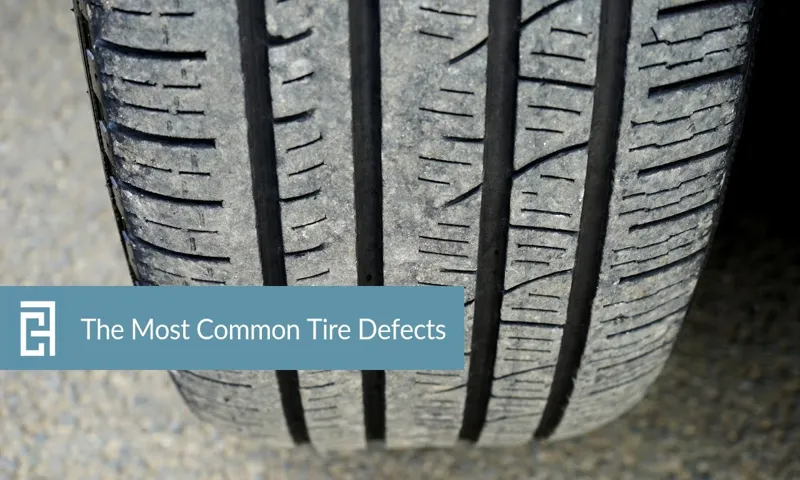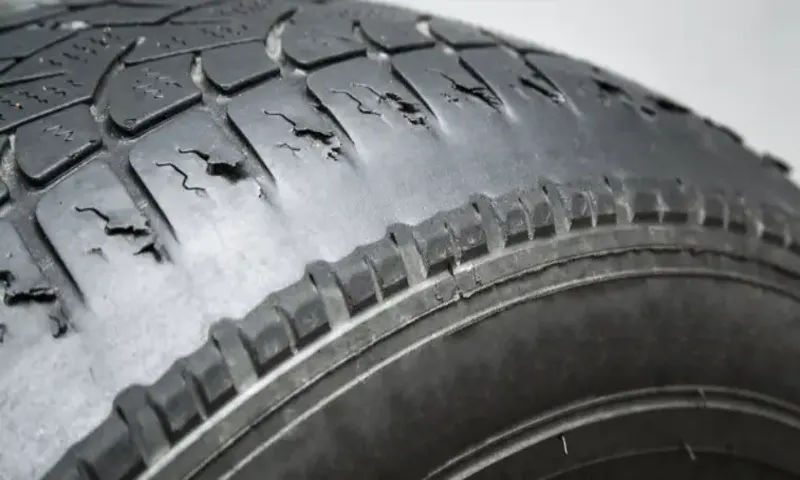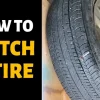Have you ever wondered how to detect defective tires? As a driver or car owner, it’s important to know the signs that your tires are not in good condition. Defective tires can lead to accidents, blowouts, and costly repairs. In this comprehensive guide, we’ll discuss everything you need to know about detecting defective tires.
From visual inspections to tread wear, we’ll cover it all. So buckle up and let’s dive into the world of tire safety. Picture this: you’re driving down the highway, enjoying the beautiful scenery around you, when suddenly you feel a jolt.
Your tire just blew out. Scary, right? This is a common scenario that can occur due to defective tires. That’s why it’s crucial to be aware of the warning signs.
We’ll start by discussing the visual cues that your tire may be defective. This includes bulges or cracks in the sidewall, uneven tread wear, and visible punctures. We’ll also delve into the importance of checking tire pressure regularly.
Low tire pressure can cause increased wear and tear, leading to a shorter lifespan of your tires. But what if your tires appear to be in good condition? There still may be underlying issues that are not visible to the naked eye. That’s why we’ll cover methods such as balancing and alignment, which can detect any hidden defects.
At the end of the day, tire safety should never be taken lightly. By familiarizing yourself with the signs of defective tires, you’ll be able to proactively prevent accidents and prolong the life of your tires. So stay tuned for our comprehensive guide on how to detect defective tires and ensure your safety on the road.
Table of Contents
Visual Inspection
If you’ve recently purchased a new tire, it’s essential to inspect it thoroughly before mounting it on your vehicle. A visual inspection is an effective way to identify if a tire is defective or not. Check for any visible damage like cuts, cracks, and bulges on the sidewalls of the tire.
Additionally, examine the tire tread to ensure there are no deformities or abnormalities in the patterns. You can also inspect the tire for any foreign objects that may have punctured it. A tire with a leak can compromise your safety, so it’s crucial to conduct a thorough visual inspection to avoid any mishaps on the road.
By taking a few minutes to inspect your new tire, you can ensure your safety and enjoy a smooth ride. Remember, prevention is always better than cure, and a simple examination can save you time and money down the road.
Look for Uneven Wear
When it comes to maintaining your vehicle, regular maintenance is key to ensuring longevity. However, even with frequent check-ups, sometimes issues can arise unexpectedly. That’s why it’s important to conduct visual inspections every so often to catch potential problems before they become major headaches.
One thing to look out for is uneven wear on your tires. Tires are a crucial component of your vehicle’s safety, so it’s important to take care of them. If they’re not wearing evenly, this could indicate that something is off with your vehicle’s alignment or suspension, both of which can cause serious safety issues if left unchecked.
To prevent accidents and costly repairs, take the time to visually inspect your tires for any signs of uneven wear on a regular basis. By catching potential problems early, you can save yourself a lot of headache and expense down the road.

Check for Cracks or Bulges
When it comes to taking care of your vehicle, it’s important to pay attention to the little details, such as checking for cracks or bulges in your tires. This simple visual inspection can help prevent potentially dangerous situations on the road. Cracks or bulges in your tires can be an indication of underlying issues, such as damage to the sidewall or tread separation.
These issues can lead to a tire blowout, which can be especially dangerous at high speeds. To check for cracks or bulges, start by visually inspecting each tire for any abnormalities. Look for any cracks or bulges in the sidewalls, which can be signs of aging or overuse.
If you notice any issues, it’s important to take your vehicle to a professional for inspection and potential replacement. Don’t wait until it’s too late – take the time to check your tires regularly to ensure a safe and smooth ride on the road.
Inspect the Tread Pattern
When it comes to inspecting your tires, one of the most important things to check is the tread pattern. This can give you a good indication of the wear and tear on your tires, as well as any potential issues that may need to be addressed. The tread pattern should be evenly worn across the tire, with no areas that appear more worn than others.
If you notice any uneven wear, this could be a sign of a problem with your alignment, suspension, or brakes. Additionally, look for any signs of damage or punctures in the tread, as well as any bulges or cracks on the sidewall. These could indicate that it’s time for a new set of tires.
Keep in mind that the amount and type of tread on your tires can also affect your car’s performance, including its handling, braking, and traction. So whether you’re driving in wet or dry conditions, it’s important to make sure your tires are in good shape.
Performance Tests
When you invest in a new set of tires, it’s important to ensure that they are not defective. One way to do this is to perform some simple performance tests. Start by checking the tire pressure and ensuring that it matches the recommended level specified by the manufacturer.
Then, take your car for a test drive and pay close attention to how the tires handle turns, stops, and starts. If you notice any vibrations, pulling to one side, or poor handling, this could be a sign of a defective tire. Additionally, it’s important to inspect the tread wear to ensure that it is even and not showing signs of balding or uneven wear patterns.
By performing these tests, you can rest assured that your new tires are in good working condition and will provide you with the safety and performance you need on the road. So, if you want to know how to tell if a new tire is defective, start by checking the tire pressure, handling, and tread wear.
Do a Slalom Test
If you’re looking to test the handling and agility of your vehicle, a Slalom Test is an excellent way to do so. This test involves maneuvering through a course of tightly spaced cones, which requires quick reflexes and sharp turns. The Slalom Test assesses a vehicle’s ability to perform in sudden and tight turns, making it a good indicator of the car’s overall stability and handling.
It’s a great way to get a sense of how your car performs in emergency situations, as well as a way to gauge its overall responsiveness. When performing a Slalom Test, be sure to take it slow at first and gradually increase your speed to get an accurate measure of your car’s abilities. So if you’re looking for a fun and challenging way to test your car’s handling, give the Slalom Test a try!
Check the Tire’s Balance
If you’ve noticed your car vibrating or shaking while driving, it’s likely the tires are out of balance. It’s an issue that many drivers encounter, and one that can impact performance and safety. But what exactly is tire balance? Essentially, it refers to the even distribution of weight around the tire and wheel assembly.
If this balance is off, it can cause uneven wear on the tires, decrease fuel efficiency, and put unnecessary strain on the suspension system. To check the balance of your tires, take your car to a qualified mechanic who can perform a series of tests. One such test involves using a balancing machine to determine any imbalances in the tire and wheel assembly.
If an imbalance is detected, the mechanic can add small weights to the wheel to bring it back into balance. Taking the time to check and balance your tires can ensure you have a smoother, safer ride and save you money in the long run by extending the life of your tires.
Listen for Unusual Noises
When it comes to keeping your vehicle in tip-top shape, it’s important to pay attention to any unusual noises it may make. These noises could be a sign of a larger underlying issue that needs to be addressed, and ignoring them could lead to costly repairs down the line. One way to test your vehicle’s performance is to take it for a test drive and pay attention to any unusual sounds it may make.
For instance, if you hear a grinding noise when you brake or a whining noise when you accelerate, it could be a sign of a problem with your brakes or transmission. By listening for these types of sounds and addressing them promptly, you can keep your vehicle running smoothly and avoid more expensive repairs in the future. Remember, a simple noise now could save you from a bigger headache later on, so always be proactive in maintaining your vehicle’s performance.
Consult a Professional
If you suspect that your new tire is defective, don’t hesitate to consult a professional to have it checked. There are various signs to watch out for, such as unusual vibrations or noise, uneven wear, or visible bulges or cracks on the tire. In most cases, a defective tire results from manufacturing errors or damage during transit or installation.
A professional tire technician will have the necessary equipment and expertise to diagnose the problem accurately and recommend safe and effective solutions. Keep in mind that driving on a defective tire can compromise your safety and that of other road users, so it’s essential to address the issue promptly. By consulting a professional, you can assure yourself that you’re getting the most out of your new tire and that you’re driving safely on the road.
Get a Second Opinion
If you’re facing a complex medical question, don’t be afraid to get a second opinion. It’s essential to consult with a professional because receiving accurate diagnosis and treatment could be crucial to your health. Your primary care physician is an excellent place to start, but if you have doubts or concerns, don’t hesitate to seek another opinion from a specialist.
They may offer a different perspective, provide different options, or answer any lingering questions that you have. When searching for a specialist, ensure they have experience in your particular health concern, and they come highly recommended. At times, second opinions can clarify that the initial diagnosis was correct all along; other times, they could offer a new set of eyes.
It’s better to have an extra opinion and be sure that you’re receiving the best possible care for your health concerns. Remember, it’s your health, and taking extra steps to ensure accurate diagnosis and treatment should never be overlooked.
Bring Your Tires to a Mechanic
When it comes to the safety of your vehicle, your tires play a critical role. It is important to keep them in good condition and that’s why it’s recommended to bring your tires to a mechanic. A professional mechanic can inspect the tires and identify any issues such as wear and tear, punctures, or any other damage.
They can also check if the tires are properly aligned and balanced, which can impact the vehicle’s performance. Consulting a professional can not only ensure your own safety but also prevent any further damage to your vehicle. While it might seem like an extra cost, it’s always better to be safe than sorry.
So next time you notice any issues with your tires, don’t hesitate to bring them to a mechanic and let the experts take care of it for you. Your vehicle will thank you for it!
Conclusion
In conclusion, detecting a defective tire can save you a lot of trouble down the road (literally). It is crucial to inspect your new tires for irregularities such as bulges, cracks, and tread wear patterns. Remember that a high-quality tire should be reliable and durable, providing excellent traction and superior performance.
Don’t let a faulty tire deflate your driving experience; stay vigilant, and you’ll roll out of the dealership with confidence and peace of mind.”
FAQs
What are some signs of a defective new tire?
Some signs of a defective new tire include uneven wear, vibration, bulges or bubbles on the sidewall, and frequent loss of air pressure.
Can a tire be defective even if it looks fine?
Yes, sometimes a tire can be defective even if it looks fine. It’s important to pay attention to any unusual vibrations or performance issues.
Should I always get a warranty when buying new tires?
It’s a good idea to consider purchasing a warranty when buying new tires. This can offer added protection in case of any defects or issues.
What should I do if I suspect my new tire is defective?
If you suspect your new tire is defective, take it to a trusted mechanic or tire specialist for inspection and possible replacement.
How can I avoid buying a defective tire?
To avoid buying a defective tire, be sure to purchase from a reputable tire dealer, check for any visible defects before purchasing, and inspect the tire thoroughly after installation.
Can a defective tire cause an accident?
Yes, a defective tire can lead to a serious accident if not addressed promptly. Always prioritize safety and address any issues with your tires as soon as possible.
How frequently should I check my tires for defects?
It’s a good idea to check your tires for defects or irregularities on a regular basis – at least once a month is recommended.



